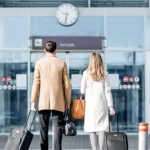Top Reasons Visitor Visa Applications Get Refused and How to Fix Them

Applying for a visitor visa to Australia can be quite straightforward. However, when applications are refused, it’s painful, costly, and stressful. The good news is that most refusals tend to be avoidable.
This guide explains the top reasons visitor visa applications get refused, why the Department of Home Affairs makes those decisions, and practical fixes you can apply right away to strengthen a re-application or appeal.
Let’s proceed to learn more about those segments in detail.
How the Department Assesses Visitor Visas
The Department of Home Affairs assesses each Visitor Visa (subclass 600) application against legal criteria. Those include identity, the genuine purpose of the visit, financial capacity, health and character, and any public-interest concerns.
Decisions tend to be evidence-driven. If the evidence is thin, inconsistent, or missing, the officer may refuse the application. For basic checklist guidance, the Department’s document tool shows exactly what’s expected for each case.
Now let’s get to know about some prominent reasons behind visitor visa refusal. We will also throw light on how you can fix a visitor visa refusal.
1) Insufficient Financial Evidence (one of the top refusal reasons)
If you can’t prove you have the funds to support your travel, accommodation, and return, the Department may refuse on the basis that you could become a cost to the community. Weak or unverifiable bank statements, unexplained large deposits, or a lack of pay slips and tax records commonly trigger refusals.
How to fix it:-
- Submit recent and genuine bank statements (3–6 months), payslips, audited accounts, tax returns, or business registration if self-employed.
- If someone is sponsoring you, include a signed sponsorship letter plus their bank statements and identity documents.
- Provide a short cover note that explains any unusual deposits (with supporting paperwork) so an officer isn’t left guessing.
2) Weak or Unclear Purpose of Visit (GTE-type concerns)
Visa officers need to be satisfied that the visit is temporary and for the specific purpose declared. When the purpose is vague (e.g., “tourism” with no itinerary) or when the applicant can’t show reasons to return home, officers often refuse. Student-related concept changes like the move from GTE to the Genuine Student Test (GST) framework show the government’s focus on assessing intent. The same logic applies to visitor assessment as well. You must be specific and credible.
How to fix it:-
- Provide a clear itinerary (flights, accommodation, events, bookings).
- Add invitation letters for family/business visits that state dates and purpose.
- Explain ties to your home country (job letter, property, family responsibilities) in a short statement attached to your application.
3) Missing or Inconsistent Supporting Documents
Mismatched names, dates, or conflicting facts between documents or simply missing items on the Department’s checklist create doubt and slow applications. VFS/embassy checklists and the Department’s document tool exist for a reason. They list what you must attach. Many refusals stem from failing to follow those lists.
How to fix it:-
- Use the Department’s Document Checklist tool and upload every document it requests.
- Verify that names, passport numbers, and dates match across all uploads.
- Create a one-page index (document name → description) so a case officer can cross-check quickly.
4) Weak Ties to Home Country (officers worry you won’t return)
If you don’t convincingly show family, employment, property, or social commitments, the officer may suspect you intend to overstay. This is a classic visitor visa mistake and a frequent reason for refusal.
How to fix it:-
- Provide employment letters confirming ongoing employment and approved leave.
- Show property ownership, ongoing study enrolments, dependent family members, or other binding commitments.
- If you own a business, include business registration documents and tax returns.
5) Poor Travel History or Prior Immigration Problems
Previous overstays, cancellations, or visa refusals (in Australia or other countries) flag risk. If prior issues exist but weren’t explained, officers may refuse under public-interest provisions.
How to fix it
- Disclose past refusals or problems proactively and attach a clear explanation plus evidence of changed circumstances.
- If relevant, show corrected behaviour (e.g., fulfilled past visa conditions or resolved outstanding legal matters).
6) False, Misleading, or Unverifiable Information (immediate red flags)
Providing forged documents, false statements, or unverifiable details is a serious ground for refusal and can attract long-term consequences. The Department enforces strict rules on accurate information.
How to fix it:-
- Never submit questionable documents. If a document looks weak, explain it transparently and add corroborating evidence.
- If you made an error, attach a correction statement and supporting docs rather than hiding it.
7) Health and Character Issues
Serious health concerns or undisclosed criminal records can lead to refusal. In some cases, the Department will request medical exams or police checks before deciding.
How to fix it:-
- Obtain and lodge police clearance certificates early when requested.
- Complete Department-requested medical checks promptly and include any relevant medical reports (if applicable) in your application.
- A clear understanding of visitor visa health insurance requirements can also help applicants avoid health-related complications in their visa assessment.
8) Sponsorship or Invitation Problems (Sponsored Family Stream)
If your sponsor’s documentation is incomplete (having missing identity/visa proof, an incomplete sponsor declaration, or requested bonds/security not provided) the visa may be refused.
How to fix it:-
- Ensure sponsors attach certified copies of their passports/visas and any additional sponsor documentation the Department requires.
- If the sponsor is providing financial support, include their bank statements, employment letters, and a signed letter of commitment.
What To Do If Your Visitor Visa Is Refused
Here is an action plan that can assist you significantly if your visitor visa is refused:-
- Read the refusal letter carefully
The refusal letter explains the legal grounds for refusal and whether the decision is reviewable. This is the single most important document. It tells you what went wrong and what remedies (if any) are available.
- Know your review options (appeal vs reapply)
Some refusals are reviewable by the Administrative Review Tribunal (ART; formerly AAT). Time limits to apply for review are strict. If a review is available, you’ll usually have a limited window to act. In other cases, reapplying with corrected and stronger evidence is the better option.
- Fix the specific problems (don’t just resubmit the same file)
If the refusal cited a lack of funds, add proper bank records and sponsor evidence. If the issue was GTE-type concerns, attach a clear travel itinerary and stronger home-country ties. You must address each ground specifically with new or clarified evidence.
- Get professional help when needed
If the case is complex or review timeframes are tight, consult an experienced migration agent or lawyer. They can assess whether an appeal or a corrected re-application gives you the best chance of success. Visa Empire provides targeted help for refusals and reapplications; right from document checks to drafting stronger statements and lodging timely reviews.
Quick Checklist to Avoid Common Visitor Visa Mistakes
Here we present before you a quick checklist relying on which can assist you in avoiding common visitor visa mistakes:-
- Use the Department’s Document Checklist and attach everything.
- Provide clear and verifiable financial documents (3-6 months of statements, payslips, tax returns).
- Include a concise itinerary and purpose statement (flights, hotels, event bookings).
- Show strong home-country ties (employment letters, property, family commitments).
- Disclose past refusals, medical issues, or criminal records and explain them fully.
- Don’t submit templates without personalisation. Officers do notice generic submissions.
- If you’re sponsored, ensure the sponsor’s documents are complete and current.
Refusals are Painful but Fixable
A refusal is not the end of the road. Most visitor visa refusals come down to missing evidence or credibility concerns that can be remedied with the right documents and explanations. You must read your refusal letter carefully, correct the exact issues raised, and consider professional support for a stronger second attempt or a merits review.
If you need help fixing a visitor visa refusal, preparing a corrective re-application, or exploring visa refusal review options, Visa Empire offers practical and experienced assistance.
Visa Empire’s visitor visa agent Perth review your refusal reasons, prepare corrected applications or appeals, and help you present a clear and credible case that addresses the Department’s concerns.
Contact Visa Empire today!!! Get expert help to fix your refusal and improve your chances of a successful visitor visa outcome.
Frequently Asked Questions (FAQs)
1. How do I avoid Australia visa rejection?
To avoid Australia visa rejection, you must ensure your application is complete, consistent, and well-supported. You must also provide strong financial documents, a clear travel purpose, and evidence that you will return home (such as employment letters, property documents, or family commitments). Avoid common visitor visa mistakes like missing documents, unclear itineraries, or inconsistent information. If unsure, getting professional guidance before applying can significantly reduce your risk of refusal.
2. What is the main reason for visa refusal in Australia?
The most common reason for visa refusal in Australia is failure to demonstrate that the applicant is a genuine temporary visitor. Due to this the officer will be suspicious of your intent to return home after your trip. Other major factors include weak financial evidence, incomplete documentation, past immigration issues, and information that is false, misleading, or unverifiable.
3. Can Australia give a visa after refusal?
Yes. Australia can grant a visitor visa after a refusal, provided the issues raised in the refusal letter are properly fixed. You may either reapply with stronger evidence or, if eligible, request a visa refusal review through the Administrative Review Tribunal. Many applicants are approved on their second attempt once financial, documentation, or GTE-related concerns are addressed clearly and thoroughly.
4. What is the visitor visa rule for Australia?
The main rule for an Australian Visitor Visa (subclass 600) is that your stay must be temporary, and you must genuinely intend to visit for tourism, family visits, or short business activities. You must also show adequate funds, meet health and character requirements, provide truthful information, and comply with all visa conditions (including not working in Australia). Ensuring your application meets these criteria reduces the risk of visitor visa refusal by the Department of Home Affairs.



